Warplanes of the USA: Virginia, Virginia Beach, Military Aviation Museum, Second World War and post-war era
Virginia Beach, Military Aviation Museum
The Museum was founded by Gerald "Jerry" Yagen in 2005, and the museum's hangars were opened to the public in 2008.
Virginia Beach, Military Aviation Museum, 1341 Princess Anne Rd, Virginia Beach, VA 23457. Jerry Yagen's Fighter Factory, Tidewater Tech, 240 Municipal Airport Road, Suffolk Municipal Airport, 23434.
Photos of biplanes, triplanes and aircraft from the First World War era on dispaly in the Military Aviation Museum, are preserved on a separate page on this website.

(IJNAF Photo)
Aichi D3A1 dive-bomber, c1941.
Aichi D3A Val replica based on a Vultee BT-13A constructed for the movie Tora! Tora! Tora!

(Tomás Del Coro Photo)
Arado Entwurf 580 (Replica).

(Michel Rehbaum Photo)

(SWAG Photo)
Beechcraft T-34A Mentor (Serial No. G778), Reg. No. N56NT.

(USAAF Photo)
Bell P-39 Airacobra firing all weapons at night.
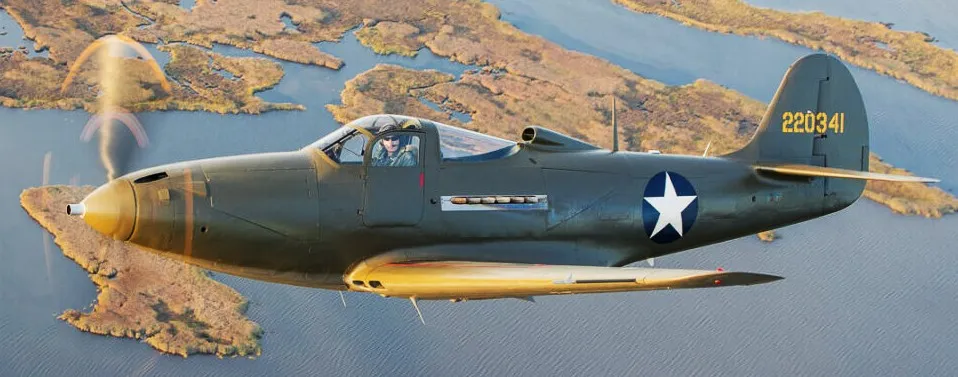
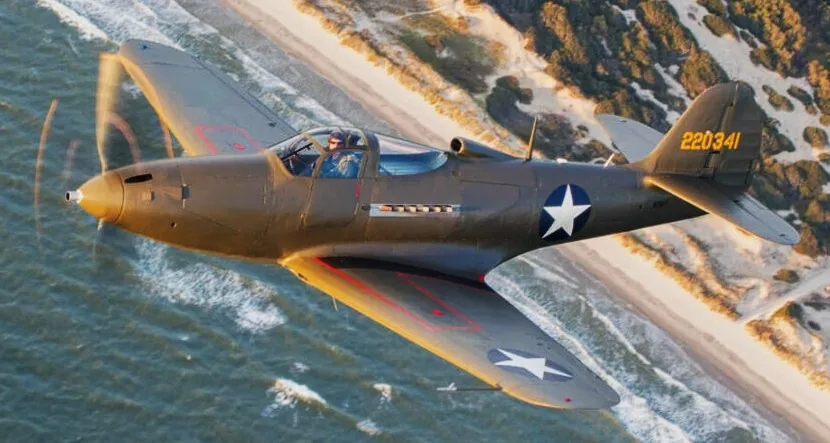
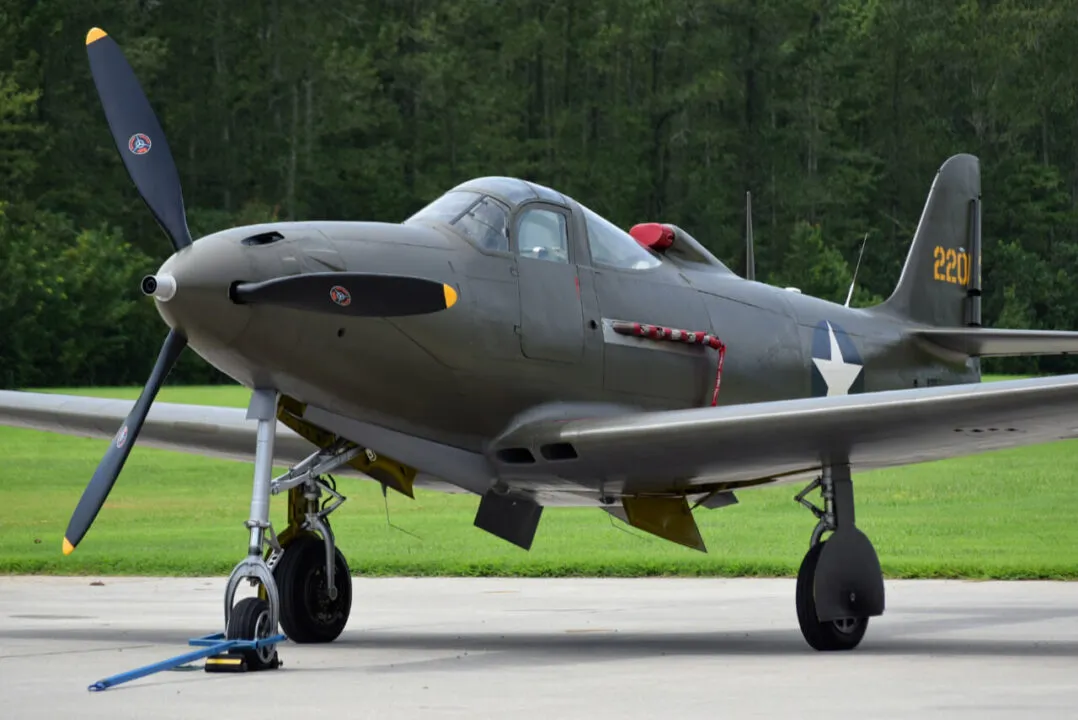
(Military Aviation Museum Photos)
Bell P-39F Airacobra (Serial No. 41-7215), which served with the USAAF 36th Fighter Squadron, 8th Fighter Group. It crash landed in Australia on 1 May 1942. It is painted to represent P-39Q (Serial No. 42-20341), a fighter which flew with the Soviet Union. As of 26 Feb 2019, airworthy, New Zealand Reg. No. ZK-COB.

(Michel Rehbaum Photo)

(SWAG Photo)
Bell P-63A-10-BE King Cobra (Serial No. 42-70609), "White 17".

(Tomás Del Coro Photo)
Blohm & Voss P 213 (Replica).

(Tomás Del Coro Photo)
Blohm & Voss P 214 ""Pulkzerstörer" (Bomber formation destroyer) (Replica).

(Tomás Del Coro Photo)
BMW TLJ-2, Strahljäger Projekt II (Replica).

(SWAG Photo)





(Joanna Poe Photos)
Boeing B-17G Flying Fortress (Serial No. 44-8543), "Chuckie B", Reg. No. N3701G. This aircraft is now the "Madras Maiden", with the Erickson Aviation Collection, Madras, Oregon.

(Joanna Poe Photo)

(Tomás Del Coro Photo)
CASA 352L, 1949, ex-Spanish Air Force (Serial No. T2B-176), painted as Junkers Ju 52, coded 1Z+AR, Reg. No. N352JU.

(Joanna Poe Photo)

(Michel Rehbaum Photo)

(SWAG Photo)
Consolidated PBY-5A Catalina (BuNo. 48294), Reg. No. N9521C.
Named for Catalina Island off California’s coast, over 3,300 PBYs were built during the war. As with all Navy aircraft, the designator PBY contains a description of the aircraft’s role, and manufacturer. In this case Patrol Bomber – with the manufacturer code “Y” representing the Consolidated Aircraft Corporation.
During the Second World War, Catalinas hunted enemy submarines, transported personnel, escorted convoys, conducted air-sea rescue missions and filled many other roles, including night-time attack. These attack aircraft were known as Black Cats due to their overall black paint schemes; they played an important role intercepting the so-called Tokyo Express – Japanese cargo convoys which resupplied their numerous Pacific island outposts by night.
The Museum’s “Cat” entered US Navy service in October 1943 and enjoyed an extensive career which took her halfway around the world. Flown from the San Diego, California factory where she was built to her first base in Norfolk, Virginia, our Catalina’s first assignment was with VPB-92. Her missions took her to French Morocco, the Canary Islands, Gibraltar, and the Azores, hunting German submarines in the late-war years. The airplane remained in naval service following the end of the Second World War, but on loan to the U.S. Coast Guard. She finally retired in 1956 with 3,567 flying hours on the airframe. The museum obtained the PBY in 2001. (MAM)
Curtiss Pusher, replica.
Curtiss JN-4 (Serial No.).

(Michael Rehbaum Photos)
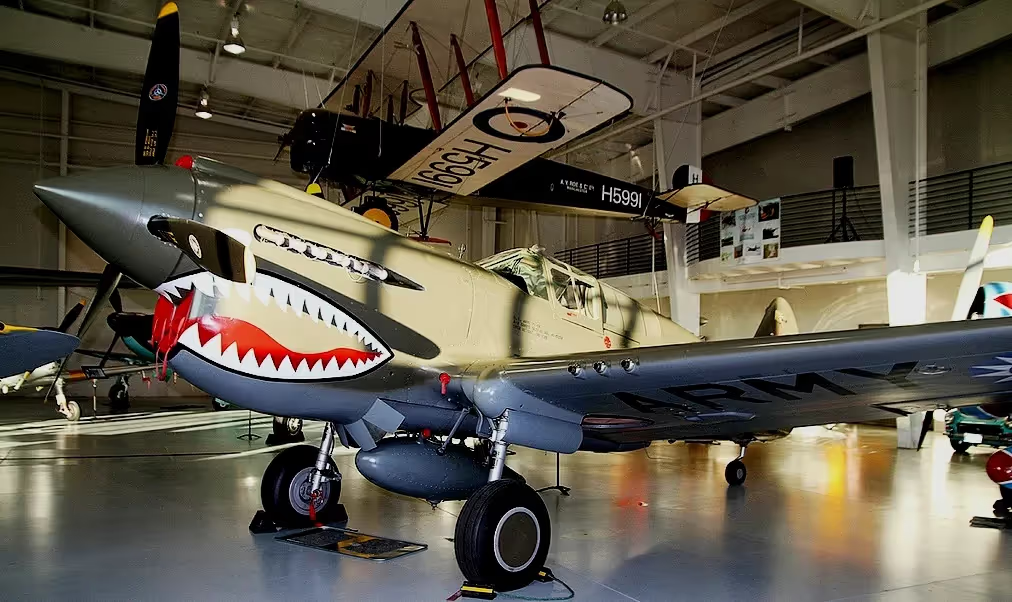
(SWAG Photo)
Curtiss P-40E Kittyhawk Mk. 1A, RAF (Serial No. ET573), USAAF (Serial No. 41-35918), Reg. No. N1941P.
During 1941, Curtiss-Wright built the Museum’s P-40E-1-CU Warhawk (41-35918) at their plant in Buffalo, New York to help satisfy a United States Army Air Corps order (Curtiss Contract Number 1025). The US Government soon transferred the aircraft to Britain’s Royal Air Force as Kittyhawk Mk. IA(Serial No. ET564), but they in turn supplied it (along with 9 others) to the Soviet Air Force, the VVS (Voyenno-Vozdushnyye Sily), during April/May 1942.
The 19th Guards Regiment flew the fighter in defense of the vital Russian port city of Murmansk, which was under threat from the invading German army. Shot down in combat near Murmansk, the P-40 remained where it fell until recovered in 1992. Soon after the Museum acquired the wreck, we shipped the fighter to New Zealand for rebuild. The fighter made its first post-restoration flight at Ardmore in April, 2003 and, following its return to the USA soon after, it became the first airplane in the Military Aviation Museum’s collection.
Col. David Lee “Tex” Hill: Our Warhawk bears the markings of an American Volunteer Group (AVG) P-40E (Serial No. 41-5658) belonging to the 3rd Squadron, known as the Hells Angels. Its livery features the AVG’s distinctive sharks mouth paintwork on the nose cowling, as well as their Walt Disney-designed Flying Tiger emblem on the fuselage. The P-40 also wears Nationalist Chinese Insignia in place of American Stars and Bars, since none of the AVG’s aircraft, nor their American pilots, were actually serving in the US Military at the time the AVG formed during the summer of 1941.
Although the AVG started out with earlier model P-40s, attrition had worn down that initial fleet of 99 fighters to just 20 operational aircraft by the time they received a shipment of replacement P-40E’s via Africa and India. “Tex” Hill, himself a part of the 2nd Squadron Panda Bears, borrowed ‘aircraft 108’ from the 3rd Squadron to lead an attack on the Salween River Gorge. The E-model’s improved 700 lb bomb capacity appealed to him for the mission profile involved, as did the extra pair of .50 caliber machine guns in the wings.
Claire Chennault, who commanded the Flying Tigers, later said that Hill and the three pilots who flew with him in their new P-40Es had “staved off China’s collapse on the Salween” after destroying a Japanese pontoon bridge and strafing enemy positions for four days in the mile-deep gorge.
“Tex” Hill began his military flying career as a US Naval Aviator, earning his wings of gold in 1939. He initially flew Douglas TBD Devastators from USS Saratoga, then Vought SB2U Vindicators aboard USS Ranger, before resigning his commission to join the AVG in China. Hill eventually became a triple-ace, claiming 12 ¼ victories with the AVG, and a further 6 in a P-51 Mustang after joining the US Army Air Forces in the Summer of 1942. “Tex” Hill survived WWII and remained with the military, eventually becoming the youngest Brigadier General in Air National Guard history. Before his death aged 92 in October 2007, “Tex” visited the Military Aviation Museum and flew in his recreated P-40E, stating afterwards that, “It looks exactly like my old plane, except… it’s too clean.” (MAM)


(Aldo Bidini Photos)

(Tomás Del Coro Photo)
de Havilland DH.98 Mosquito FB Mk 26, RCAF (Serial No. KA114), 1945, Canadian built, this aircraft is airworthy.

(Michel Rehbaum Photo)

(SWAG Photo)
de Havilland DHC-1 Chipmunk (Serial No. C1/0576), Reg. No. N559WK.
Douglas SBD-5 Dauntless (BuNo. 36175) on loan from the NNAM and being restored to airworthy condition. This Dauntless was recovered from Lake Michigan in 1994.
Douglas A-24B Banshee project.

(wallycacsabre Photo)
Douglas A-26B Invader (Serial No. 41-39161), painted as (Serial No. 44-36874), Reg. No. N26RP. 8-gun version.
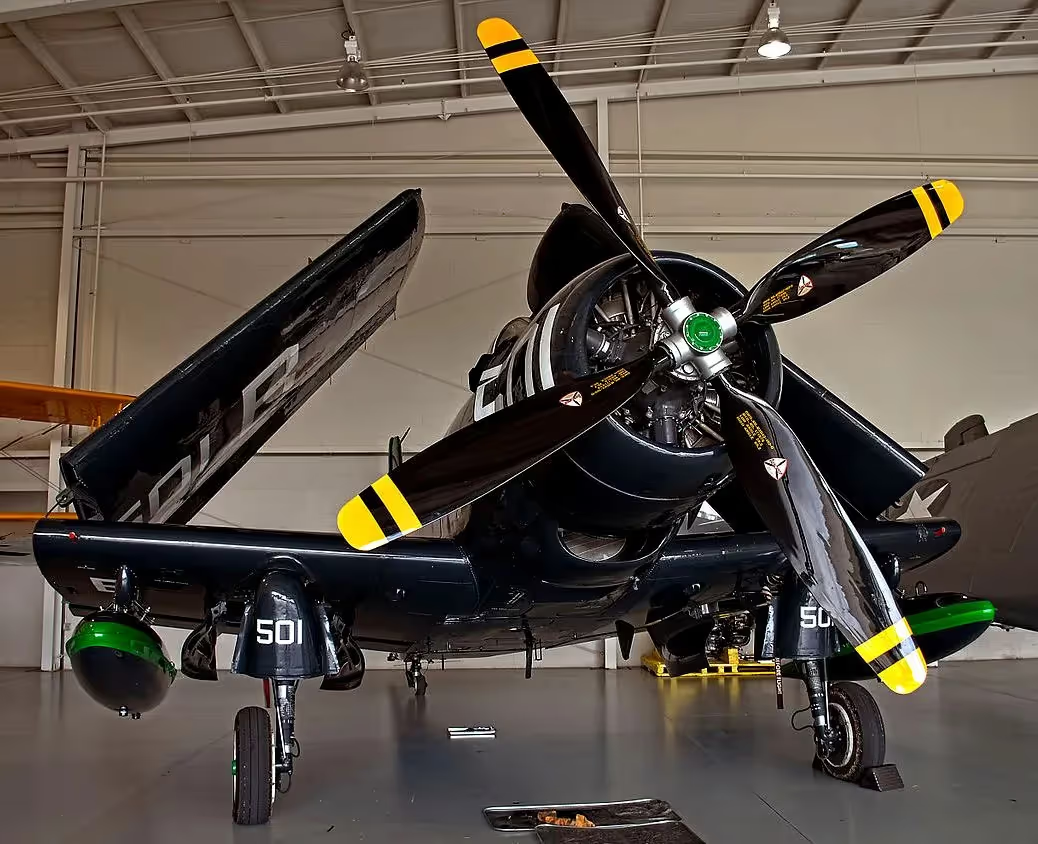
(Joanna Poe Photo)

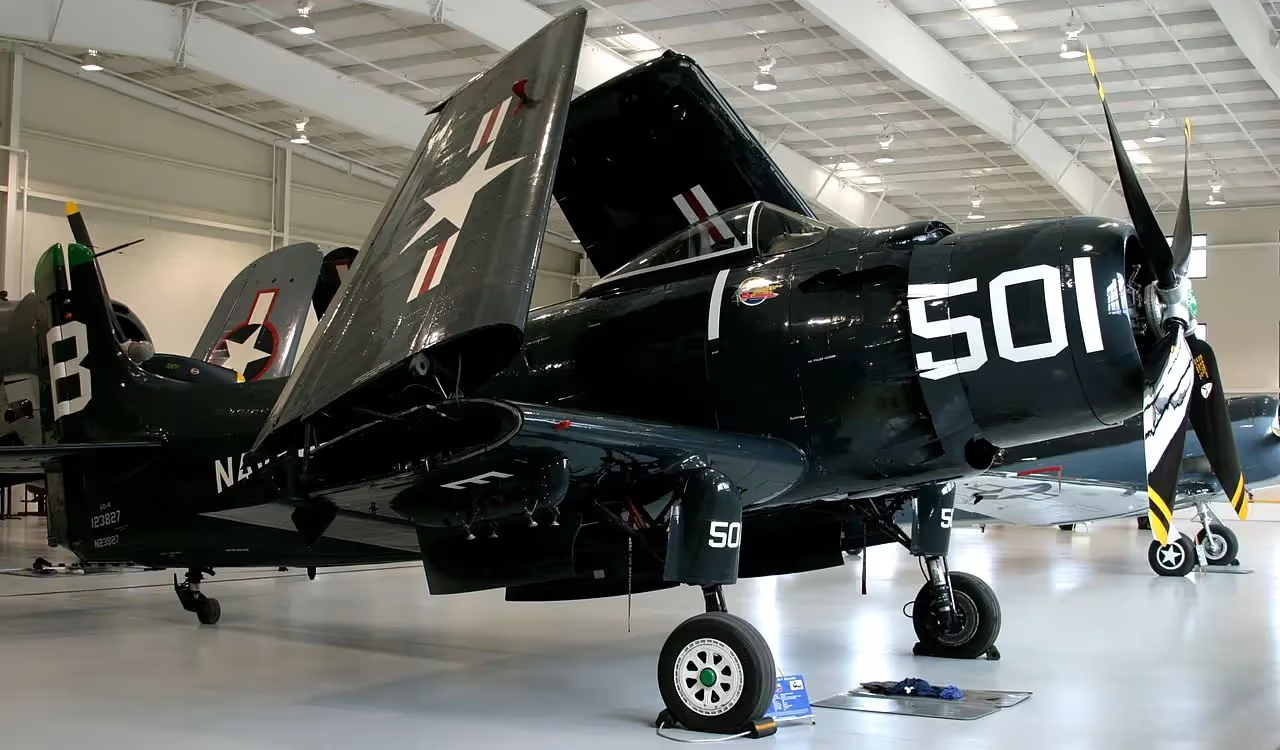
(Michel Rehbaum Photos)

(Aldo Bidini Photo)

(SWAG Photo)
Douglas AD-4 Skyraider (BuNo. 123827), 501, Reg. No. N23827.
Fairchild PT-19A-FA (Serial No. 42-83643), (T43-7230), "Black 129".

(Tomás Del Coro Photo)
Fiat G-46-3B, c/n 141, Reg. No. N46FM.

(SWAG Photo)
Fieseler Fi-156 Storch (Serial No. 751), Reg. No. N42FM. Moraine Saulnier MS-500 Criquet (France) wings, German fuselage.

(Michel Rehbaum Photo)


(Tomás Del Coro Photos)
Fieseler Fi 103, V-1 flying bomb (Vergeltungswaffe 1, Fieseler Fi 103). Discovered intact in a tunnel in Poland after German reunification in 1989. Fully functional and the only one known which retains its radio homing device.
Fleet 2 (Serial No. 29Y). In storage.


(Joanna Poe Photos)

(SWAG Photo)
Focke-Wulf Fw 190 (Wk. Nr. 550479), new-build, airworthy replica.


(Tomás Del Coro Photos)
Focke-Wulf Fw 190A-8, c/n 005, new-build with Russian engine, Reg. N190BR.


(Tomás Del Coro Photos)
Focke-Wulf Fw 190A-8 being restored. "Blue 4", (Werk Nr. 732183), was built in July-August 1944, and was lost on 9 Feb 1945, defending German occuppied Norway against an Allied air raid. It was recently recovered from where it had crashed.

(SWAG Photo)

(Tomás Del Coro Photo)
Focke-Wulf Fw 190D-9 (Werk Nr. 210079), Black 12, new-build Flugwerk replica, Reg. No. N263TB.

(SWAG Photo)
Grumman/General Motors (Eastern) FM-2 Wildcat (BuNo. 47030). (F4F).
Derived from the Grumman-built F4F-4, our FM-2 Wildcat variant was manufactured by General Motors and featured several design improvements, including a modified tail, more powerful engine (Wright Cyclone R-1820-56) and a reduced number of wing-mounted machine guns to provide greater room for ammunition.
General Motors continued to produce Wildcats and improve upon their design even after Grumman switched over to manufacturing the more advanced F6F Hellcat. The Museum’s FM-2 received its first assignment to San Pedro, California in April 1944, having been built just a short time earlier at General Motors’ Eastern Aircraft Division plant in Linden, New Jersey. It was assigned to the South Pacific during the summer of 1944, before eventually returning to San Diego, California, and then moving to Florida, where it joined a training unit. In July 1945, a short time before war’s end, the fighter received a new assignment at Naval Auxiliary Air Station Pungo in Virginia Beach, just 4 miles north of the Museum!
NAAS Pungo: Also known as NOLF Pungo, due to its origin as an outlying landing field for aircraft training at Norfolk, NAAS Pungo’s mission involved supporting the operations and training of composite squadrons, many of which operated from small escort carriers in the Atlantic Ocean. The squadrons had the primary mission of protecting convoys while also hunting and destroying enemy U-Boats. Twenty four of these squadrons passed through Pungo during the Second World War, with most of them comprising a mixture of Wildcats and Avengers. (MAM)

(Joanna Poe Photo)
Grumman/General Motors (Eastern) TBM-3E Avenger (BuNo. 53454), Reg. No. N7030C.
Of the 9,837 Avengers built, 7,546 were completed as TBMs, with the Museum’s example (BuNo.53454) being one of them. Delivered to the Navy on May 26, 1945, our Avenger arrived too late to see combat in WWII.
Captain Richard “Zeke” Cormier: The Museum’s Avenger wears a paint scheme paying tribute to US Navy Ace Captain Richard “Zeke” Cormier. Cormier flew 75 combat missions in Avengers over the Atlantic Ocean hunting German U-Boats before transferring to the Pacific Theater, where he became an ace while flying 61 missions in the Grumman F6F Hellcat. The aircraft’s livery represents Composite Squadron 1 (VC-1) which operated from the Escort Carrier USS Card (CVE 11). Composite Squadrons featured different aircraft types, often a mixture of Wildcats and Avengers, operating as anti-submarine, Hunter-Killer groups in the Atlantic. (MAM)

(Joanna Poe Photo)


(Michel Rehbaum Photos)

(SWAG Photo)

(Tomás Del Coro Photo)
Goodyear FG-1D Corsair (BuNo. 92508), Reg. No. N46RL.
The Museum’s Corsair is one of the 4,007 which Goodyear Aircraft built under license at their factory in Akron, Ohio. The Brewster Aeronautical Corporation built 735 examples under license as well. Constructed in May 1945, the Museum’s Corsair (BuNo. 95208) was part of a buildup of equipment intended to supply the invasion of the Japanese Home Islands – an eventuality which, thankfully, proved unnecessary.
Commander Shelton “Ray” Beacham, USN: The Museum’s Corsair honors a hometown hero, Norfolk-born Shelton “Ray” Beacham, who flew with VF-17 in the Pacific and was sometimes known as the ‘Kittyhawk Kid’. Beacham, a local Northside Junior High School teacher, had joined the US Navy in 1939, earning his wings the following year. In 1943, Lt. Beacham was assigned to VF-17, a U.S. Navy fighter squadron. The Skull and Crossbones adorned the noses of Corsairs in this unit, an emblem proudly displayed on the museum’s FG-1D too. While serving in the Pacific, Beacham was credited with two aerial victories, both of them marked on the Museum’s Corsair.
During Beacham’s time with VF-17, the squadron was said to have been a clear leader amongst the Solomons Fighter Command units and played a key role in reversing the bad reputation which the Corsair received in the early days of its service. (MAM)

(SWAG Photo)

(Tomás Del Coro Photos)
Hawker Hurricane Mk. XIIB, RCAF (Serial No. 5667), c/n 56022, coded DZ-O, built in Canada in 1943. Reg. No. N943HH. Twelve .303-inch machine-guns.

(Tomás Del Coro Photo)
Hütter Hü 136 Dive Bomber (Replica).

(SWAG Photo)
Laister-Kauffman TG-4A (Serial No. 126), tandem 2-seat sailplane, Reg. No. N51462.


(Tomás Del Coro Photos)
Lavochkin La-9 Fritz (Serial No.), c/n 828, "White 28", Reg. No. N415ML.

(Tomás Del Coro Photo)
Lippisch P.13a (Replica).

(Tomás Del Coro Photos)

(SWAG Photo)
Messerschmitt Bf 108 Taifun (Serial No. 258), Nord N1002 Pengouin, Yellow 4, Reg. No. N108ZZ.

(Tomás Del Coro Photo)
Messerschmitt Bf 208 (enlarged Bf 108) with retractable tricycle landing gear, built as a Nord 1100 in 1946, "Yellow 14".
Messerschmitt Bf 109E-7 (Serial No. 2023). Being restored in Russia from five wrecks with E-3 and E-7 parts. To be restored as a G variant.
Messerschmitt (Hispano HA-1112-M1L Buchón C.4K-64) Bf 109G-4 "Black 1", ex-D-FOOM, Reg No. N109GY, converted to accomodate a Daimler-Benz DB605 engine. Airworthy.
Messerschmitt Me 262/B-1c Schwalbe (Serial No. 501243), new-build replica, "White 3".

(Tomás Del Coro Photo)
Messerschmitt Me-328 (Replica).



(Tomás Del Coro Photos)
Mikoyan-Gurevich MiG-3 (Serial No.), "White 17".
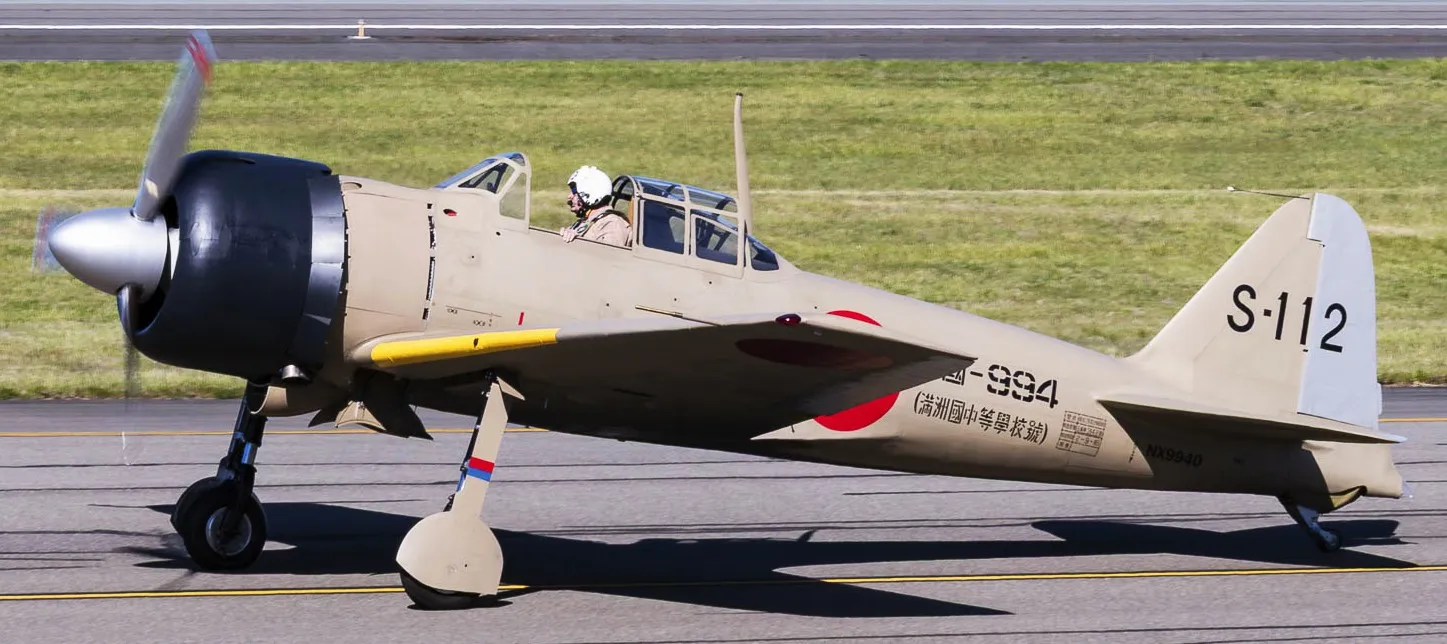
(Jordan Arens Photo)
Mitsubishi A6M3 Model 32 Zero, S-112, coded 994, airworthy.


(Joanna Poe Photos)
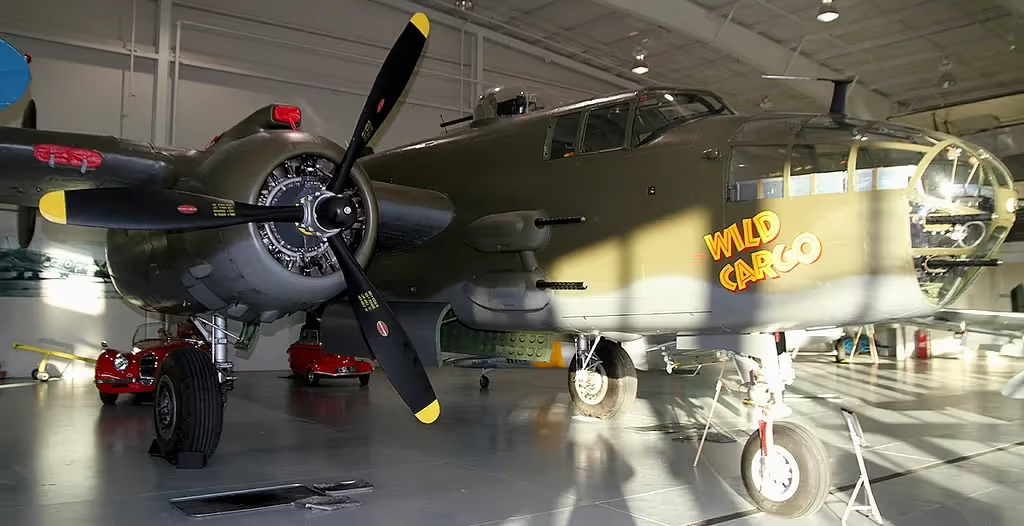
(SWAG Photo)

(Michael Rehbaum Photo)
North American B-25J-25/27-NC Mitchell (Serial No. 44-30129), “Wild Cargo”, Reg. No. N7947C.


(Joanna Poe Photos)

(SWAG Photo)

(Tomás Del Coro Photo)
North American P-51D-25NA Mustang (Serial No. 44-72483), painted as (Serial No. 44-63684), ex-Swedish Air Force, “Double Trouble Two”, Reg. No. N51EA.
The Museum’s P-51D is one of more than 15,500 Mustangs built. Constructed in 1945, the fighter immediately journeyed to England where it joined the Eighth Air Force. The Military Aviation Museum acquired the aircraft from its previous owner in Switzerland during 2004.
Lieutenant Colonel William “Wild Bill” Bailey: Our aircraft is painted in the markings of the 353rd Fighter Group with the black and yellow checkers on its nose, and a black and yellow propeller spinner. Known as the Slybirds, this Fighter Group comprised the 350th, 351st, and 352nd Fighter Squadrons.
The aircraft’s specific livery represents a 353rd FG Mustang flown by Lieutenant Colonel “Wild Bill” Bailey, Deputy Group Commander, and includes his six aerial victory symbols. He called his original aircraft Double-Trouble because he left two girlfriends at home in the United States; the name for his subsequent Mustang became Double-Trouble Two after another pilot crashed the original.
A graduate of the Civilian Pilot Training Program, Bailey chose Army Flight Training in 1940 instead of Harvard Business School. During his two operational tours, Bill Bailey flew 186 combat missions, totaling 454 hours. Thirty two of these missions (and 129 hours) were in the P-51. Bailey received credit for 3 enemy aircraft destroyed in aerial combat and an additional 3 destroyed on the ground. (MAM)

(SWAG Photo)

(Michael Rehbaum Photo)
North American SNJ-2 Texan, USN, (Serial No. 2011), Reg. No. N55729.

(SWAG Photo)
North American SNJ-4 Texan (Serial No. 26939), Reg. No. N43NA.

(USAAF Photo)
North American P-64, replica (NA-28), based on an SNJ-4. Similar in appearance to the P-64 shown above, ca 1942.

(Michel Rehbaum Photo)

(Joanna Poe Photo)

(SWAG Photo)
North American T-28D Trojan (Serial No. 49-1634), Reg. No. N99160. Airworthy.

(Tomás Del Coro Photo)
Piper J3C-65 (Serial No. 3196), "Glimpy", USN colours, Reg. No. N23464.

(SWAG Photo)

(Tomás Del Coro Photo)
Polikarpov Po-2 Mule (Serial No. 0717), Reg. No. N3602. Being restored to flying status.

(SWAG Photo)
Polikarpov I-15bis (Serial No. 3994), Reg. No. N3815R. Being restored to flying status. (30% original parts, 70% restoration). Possibly the only survivor.

(Michel Rehbaum Photo)
Polikarpov I-153 (Serial No. 6316). Derivative of the I-15.

(Michel Rehbaum Photo)

(Tomás Del Coro Photo)
Polikarpov I-16 Rata (Serial No. 2421028), White 28, Reg. No. N1639P. 1939. Being restored to flying status.
Polikarpov I-53RP Chaika (Serial No. 6316). Being restored to flying status.


(Tomás Del Coro Photos)
Radioplane Q-19D Target Drone.

(SWAG Photo)
Ryan PT-22 Recruit (Serial No. 717), Reg. No. N56081.

Sikorsky S-51 Dragonfly, US Coast Guard, ca 1948. (USCG Photo)
Sikorsky S-51 Dragonfly (Serial No.). On loan to a helicopter museum in Richmond.

(SWAG Photo)
Stinson L-5E Sentinel (Serial No. 3786), Reg. No. N57WT.

(Aldo Bidini Photo)

(SWAG Photo)

(Michael Rehbaum Photo)
Supermarine Spitfire LF Mk. IXe, RAF (Serial No. MJ730), CBAF 7243, Reg. No. N730MJ. MJ730 saw service in North Africa, Malta, Czechoslovakia and the UK. It may have a record of 5 kills while flown by a number of different pilots. The Museum’s Spitfire flew more than 100 combat missions during the Second World War. Manufactured at Vickers-Armstrong’s Castle Bromwich Aircraft Factory, MJ730 was test-flown by the legendary Alex Henshaw on 10 Dec 1943. She was soon shipped to Casablanca, Morocco aboard the S.S. Leeds City.
MJ730 saw her first combat missions with No. 417 Squadron, Royal Canadian Air Force (RCAF), defending the Anzio Beachhead via a base in Marcianise, Italy. Reassigned to No. 154 Squadron, Royal Air Force (RAF), MJ730 flew 95 combat missions supporting the invasion of Southern France from a base at Poretta on the Mediterranean island of Corsica. In October 1944, the fighter joined No. 32 Squadron RAF in Kalamaki, Greece. During this time, MJ730 flew 12 combat missions over the Balkans before finally moving on to No. 94 Squadron, RAF in Sedes, Greece.
Following the end of the Second World War, MJ730 became part of the re-established Italian Air Force, and eventually joined the fledgeling Israeli Air Force. After its retirement from Israeli service, the Spitfire ended up on a playground at a Kibbutz Kabri near the Lebanese border, which is where the British warbird salvager, Robs Lamplough, found her in 1976. Lamplough acquired the aircraft and recovered her back to Britain for restoration in 1978. MJ730 made her first post-restoration flight a decade later.
Squadron Leader George Frederick Silvester, DFC: When MJ730 first arrived at No. 32 Squadron, Squadron Leader George Silvester made her his personal aircraft. Before an individual aircraft code could be applied to MJ730, Silvester had remarked to his ground crew that “There was a bit of a question mark” over which identifier to use, since a squadron’s Commanding Officer (CO) belongs to neither of its two flights. As a joke, the ground crew applied a question mark to MJ730’s fuselage, but the gesture amused Silvester so he chose to keep it! The airplane has since been referred to as “The CO’s Query.” (MAM)

(USN Photo)
Vought OS2U-1 Kingfisher in flight.
Vought OS2U Kingfisher (Serial No.). Wreckage recovered from a crash site. Parts stored in a box in the barn.

Vought F4U Corsair formation flight. (USN Photo)
Vought F4U Corsair (BuNo. unknown). Reg. No. unknown.

(San Diego Air & Space Museum Photo)
Yakovlev Yak-3, ca 1944, USSR.






Yakovlev Yak-3, ca 1944, USSR. (Soviet Air Force Photos)

(SWAG Photo)

(Tomás Del Coro Photo)
Yakovlev Yak-3M (Serial No. 0470103), Reg. No. N42YK. Airworthy replica.
Yakovlev Yak-55 (Serial No.). Built in 1955, this aircraft is disassembled and stored in a hangar.

(Tomás Del Coro Photo)
Zeppelin "Fliegende Panzerfaust" (Replica).





